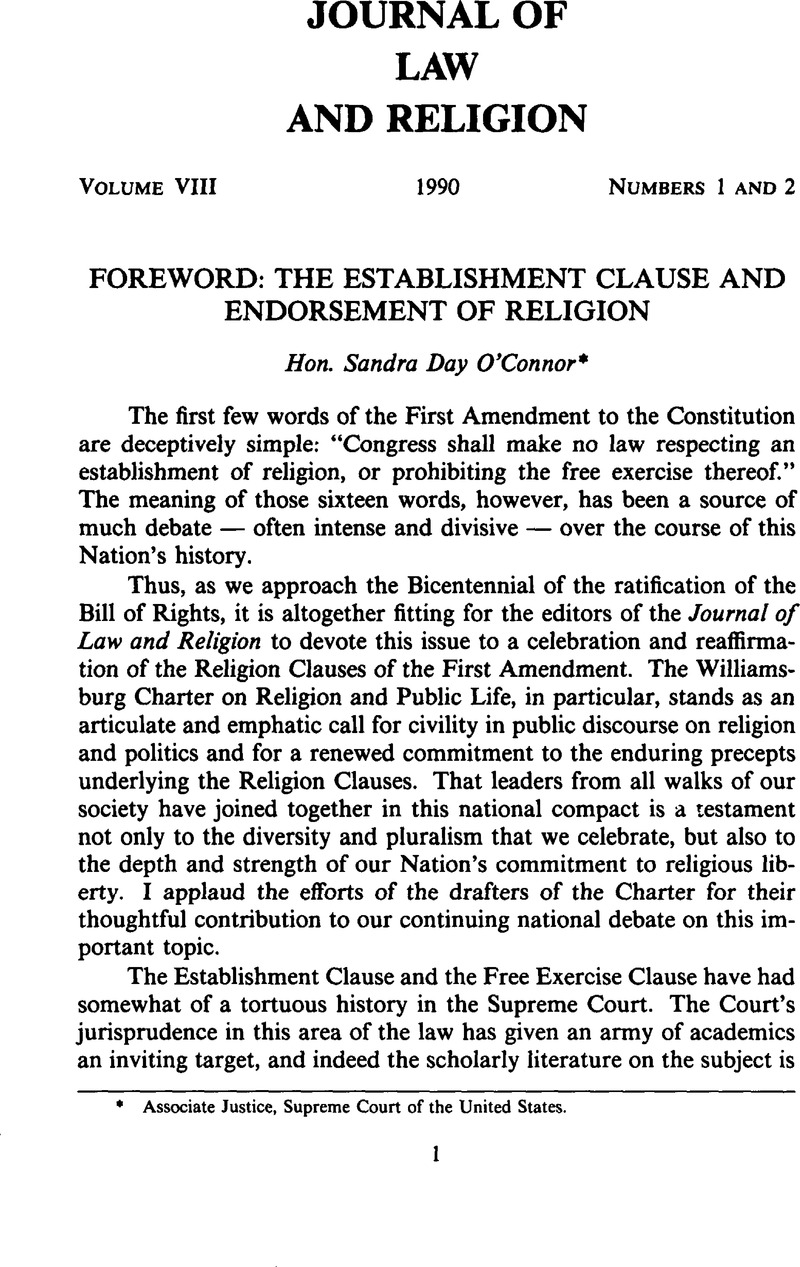No CrossRef data available.
Published online by Cambridge University Press: 24 April 2015

1. See Lynch v Donnelly, 465 US 668, 687-688 (1984) (concurring opinion); Wallace v Jaffree, 472 US 38, 70 (1985) (opinion concurring in the judgment); see also Grand Rapids School Dist v Ball, 473 US 373, 389 (1985) (“[A] core purpose of the Establishment Clause is violated” where government action “conveys a message of government endorsement or disapproval of religion”) (citation omitted).
2. See generally Greeley, Andrew M., Religious Change in America (Harvard, 1989)Google Scholar; U.S. Bureau of the Census, The Statistical History of the United States 389–392 (Government Printing Office, 1970)Google Scholar.
3. See Lynch v Donnelly, 465 US, at 688 (concurring opinion).
4. See Barlow, Richard B., Citizenship and Conscience 57–76 (Pennsylvania, 1962)CrossRefGoogle Scholar.
5. Levy, Leonard W., The Establishment Clause: Religion and the First Amendment 4 (Macmillan, 1986)Google Scholar.
6. Pfeffer, Leo, Church, State, and Freedom 74–75 (Beacon, 1967)Google Scholar.
7. Jefferson, Thomas, A Bill for Establishing Religious Freedom (1779)Google Scholar, in Kurland, Philip B. & Lerner, Ralph eds, 5 The Founders' Constitution 77 (Chicago, 1987)Google Scholar (emphasis added). The statute was adopted in 1786 after a long and bitter struggle in the Virginia legislature. See Va Code § 57-1; Koch, Adrienne & Peden, William eds, The Life and Selected Writings of Thomas Jefferson 311–313 (Modern Library, 1944)Google Scholar.
8. Curry, Thomas J., The First Freedoms: Church and State in America to the Passage of the First Amendment 199 (Oxford, 1986)Google Scholar (emphasis added). Madison also warned that the infusion of any particular religion within government is bad because “[i]t degrades from the equal rank of Citizens all those whose opinions in Religion do not bend to those of the Legislative authority … [and] will have a like tendency to banish our Citizens.” Madison, James, Memorial and Remonstrance Against Religious Assessments (1785)Google Scholar, quoted in Everson v Board of Education, 330 US 1, 69 (1947).
9. Mead, Sidney E., The Old Religion in the Brave New World 41 (California, 1977) (emphasis added)Google Scholar.
10. See County of Allegheny v American Civil Liberties Union, 109 S Ct 3086, 3100-3101 (1989).
11. Compare Everson, 330 US, at 15-16 (discussing “wall of separation” between government and religion), with Wallace, All US, at 91-107 (Rehnquist dissenting) (government may accommodate religion by providing non-discriminatory aid to religion).